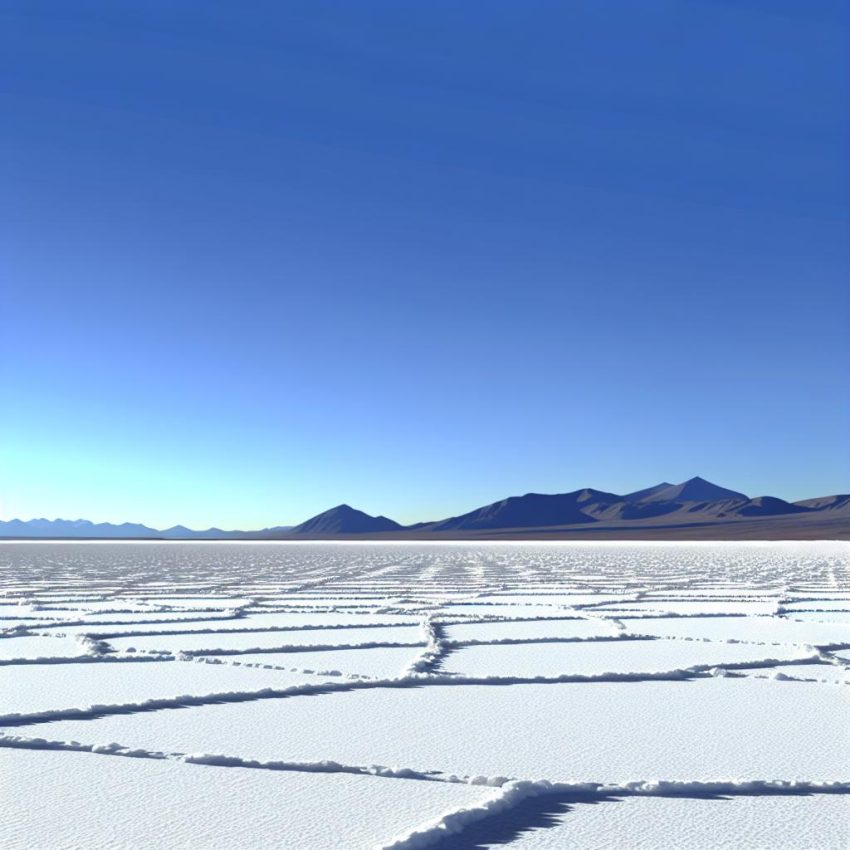Introduction to Salinas Grandes
The Salinas Grandes serves as a notable geographic and economic landmark situated in the northwest region of Argentina, primarily spanning the regions of Jujuy and Salta provinces. Known for its vast, white expanses and unobstructed vistas, this natural wonder captivates the interest of both geographers and economists.
Geographical Composition
Covering an extensive area of roughly 2,300 square miles, the Salinas Grandes ranks among the largest salt flats on the globe. Positioned at an impressive elevation of around 3,450 meters (11,319 feet) above sea level, this area exhibits distinct climatic and ecological characteristics. The region is primarily marked by its arid climate, receiving a minimal amount of precipitation annually. This unique environment contributes to the distinctiveness of the salt flat.
Climatic Conditions
The high-altitude, arid environment of the Salinas Grandes creates specific weather patterns that are typical of high desert ecosystems. With limited rains throughout the year, the necessary conditions for salt accumulation are naturally facilitated. The region experiences stark temperature variations between day and night, which also play a role in the distinct evaporation processes that contribute to the formation of the salt flats.
Flora and Fauna
While the arid conditions of the Salinas Grandes may seem inhospitable, certain resilient flora and fauna have adapted to this harsh environment. Various species of salt-tolerant plants, such as halophytes, are found here, offering a glimpse into nature’s adaptability. Some unique wildlife also inhabits the periphery of the salt flat, adapting to the minimal resources available.
Formation and Structure
The remarkable structure of the Salinas Grandes stems from geological transformations occurring over millennia. Originally part of a large prehistoric lake, the area transformed significantly due to climatic shifts that led to its desiccation. As the lake waters gradually evaporated over time, the remaining large deposits of salt laid the foundation for the present-day expansive salt flats. This has resulted in the characteristic geometric patterns observed on the surface, formed by the continuous reshaping and evaporation processes.
Geological Processes
The geomorphological progression that led to the formation of the Salinas Grandes involves intricate interactions between sedimentation, evaporation, and tectonic activity. As the ancient lake began to dry up, sedimentary deposits solidified and consolidated, creating expansive layers of salt and minerals. Active tectonic movements in the Andean region further influence these formations, contributing to their continued evolution.
Economic Significance
The Salinas Grandes holds substantial economic value, crucial to both local and national economic frameworks. The extraction of salt from the surface is a primary economic activity. This salt undergoes processing and is subsequently distributed both within Argentina and to international markets. In recent times, the discovery of significant lithium reserves beneath the salt crust has further accentuated its economic importance. Positioned within the “Lithium Triangle” of South America, the Salinas Grandes is recognized as part of one of the largest lithium-rich regions globally.
Lithium Extraction and Environmental Considerations
Lithium extraction in the Salinas Grandes involves the pumping of brine from beneath the salt layers. This brine is allowed to evaporate in expansive ponds to isolate lithium compounds. While this method is economically fruitful, it poses environmental challenges, including potential water depletion and soil contamination. The process has sparked debates aiming to weigh economic gains against the preservation of environmental sustainability and the well-being of local communities.
Balancing Economic and Environmental Interests
Stakeholders, including governmental entities, environmental groups, and local communities, engage in ongoing discourse to strike a balance between resource extraction and ecological preservation. These discussions often focus on ensuring sustainable development that aligns economic aspirations with the protection of the diverse natural and cultural environments present in the Salinas Grandes.
Cultural Importance
Beyond its economic implications, the Salinas Grandes holds profound cultural and spiritual significance for the indigenous communities residing around the region. These communities have cultivated a deep connection with the land over generations, with their traditional knowledge and practices intricately woven into the identity of the salt flats. Indigenous advocacy efforts actively seek to safeguard land rights and prioritize sustainable development strategies that respect cultural heritage.
Tourism
Tourism in the Salinas Grandes draws numerous visitors eager to experience its spectacular landscapes firsthand. The stunning contrast between the white salt flats, the encircling mountain ranges, and the vast blue skies provides unparalleled scenic views. Tourists often partake in guided tours that support local economies, and visitations peak especially during the wet season, when a thin water layer reflects the sky, creating mesmerizing mirror-like surfaces.
Sustainable Tourism Practices
Given the ecological sensibilities of the region, efforts are underway to promote sustainable tourism practices. This involves engaging local communities in tourism management, ensuring the preservation of the natural environs, and creating economic opportunities that benefit both the environment and inhabitants.
Conclusion
The Salinas Grandes stands as a unique natural monument of aesthetic and economic complexity. As global interest in its resources, particularly lithium, grows, it becomes ever more crucial to responsibly manage these interests. Sustainable approaches, informed by scientific, environmental, and cultural understandings, are vital to safeguarding the Salinas Grandes for future generations, ensuring that its vibrant landscapes and rich cultural narratives endure amidst evolving economic ambitions.

